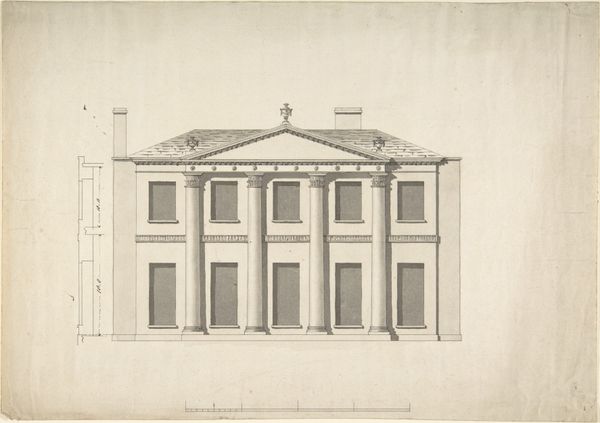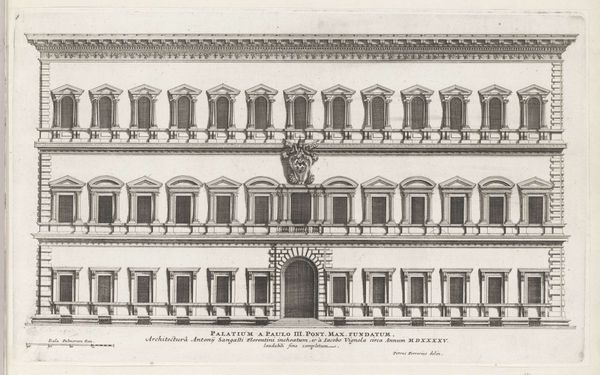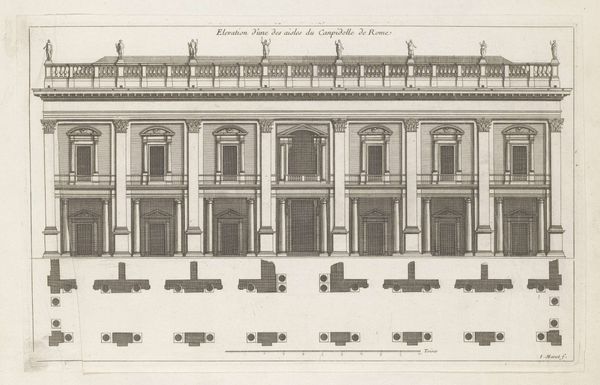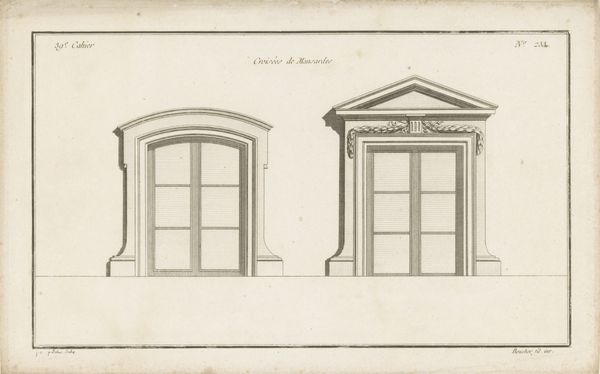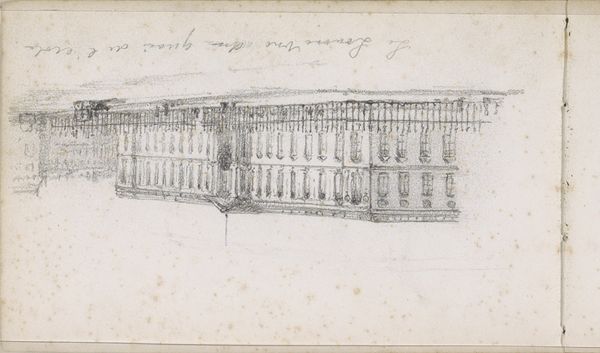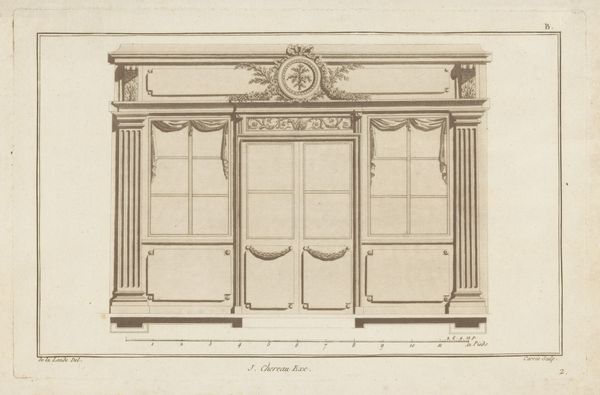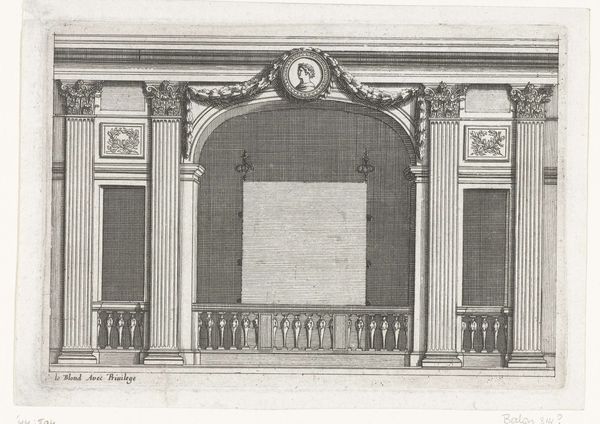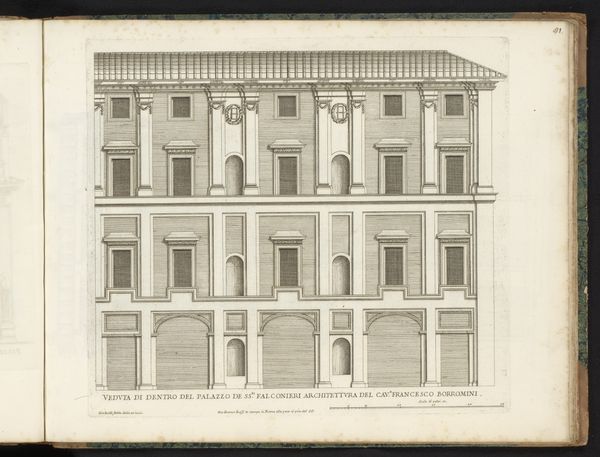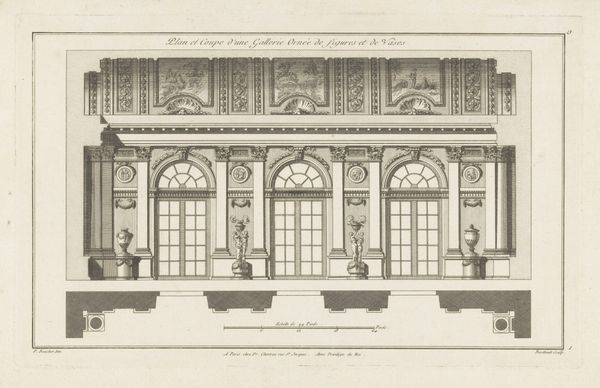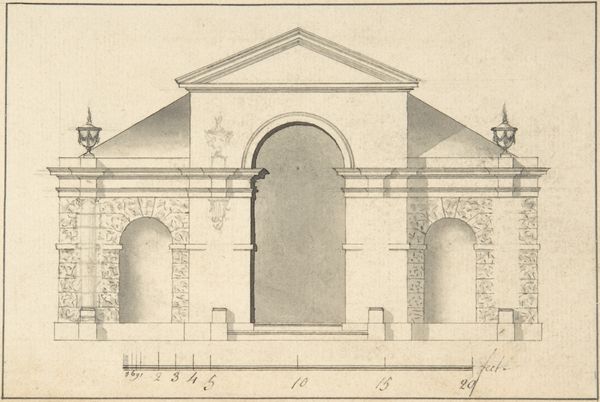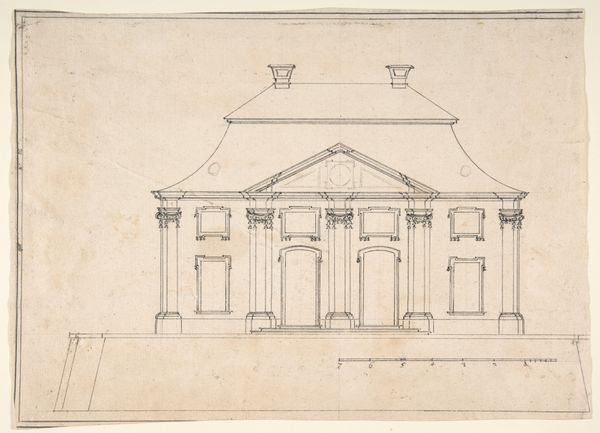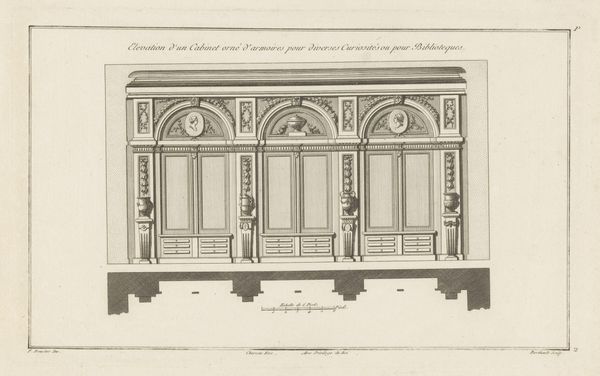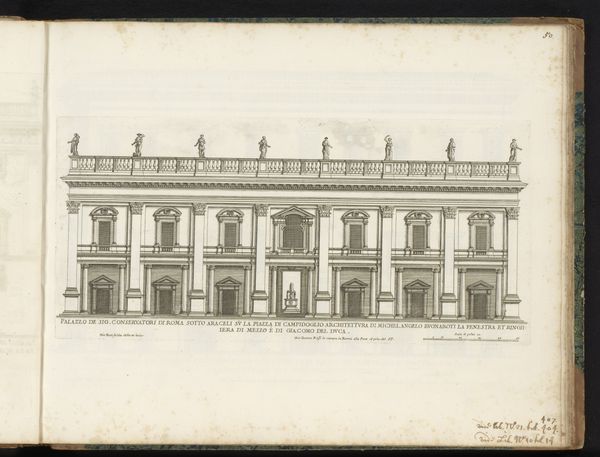
drawing, paper, pen, architecture
#
pencil drawn
#
drawing
#
aged paper
#
toned paper
#
light pencil work
#
pencil sketch
#
old engraving style
#
sketch book
#
paper
#
personal sketchbook
#
sketchbook drawing
#
pen
#
cityscape
#
pencil work
#
architecture
Dimensions: height 101 mm, width 138 mm
Copyright: Rijks Museum: Open Domain
Editor: This drawing, "Stadhuis van Groningen, 1810," attributed to an anonymous artist, is a cityscape created using pen and pencil on paper. It has an architectural and almost blueprint-like quality. How would you approach interpreting this piece? Curator: I’m immediately drawn to the materials themselves and the social context of their use. Consider the ready availability of paper and pencil versus more laborious methods of architectural representation at the time. How does the efficiency of these materials shape the portrayal of civic power represented by the Stadhuis? Was this drawing made for practical use, or for a wider audience? Editor: That's an interesting perspective. I was focusing more on the composition and how it reflects Neoclassical ideals. The precision gives it authority. Curator: Precisely. The "authority" you perceive arises, in part, from the efficient replication of classical elements facilitated by readily available materials. Consider the economic and social implications: who had access to these materials? Who was able to translate the built environment into reproducible images? Editor: I see your point. By focusing on the materials and methods, you’re uncovering the power dynamics inherent in creating and disseminating this image of civic architecture. Were these drawings commissioned for sale perhaps? Curator: Indeed, consider the inscription noting the publisher and location. The print functioned, like many others of the era, as a consumer product traded across a growing market and political reality – Amsterdam "place Napoleon No. 1," after all! What does the act of distribution say about value then? Editor: So, what appeared to me initially as a straightforward architectural study now reveals layers of economic and social meaning through the lens of material production. That really opens things up. Curator: Exactly. By looking at the "how" and "why" it was made and distributed, the drawing becomes less about the building itself and more about the system of its representation.
Comments
No comments
Be the first to comment and join the conversation on the ultimate creative platform.
